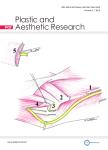Key rheological properties of hyaluronic acid fillers:from tissue integration to product degradation
Key rheological properties of hyaluronic acid fillers:from tissue integration to product degradation作者机构:Research and Development DepartmentKylane Laboratoires S.A.Plan-les-Ouates 1228Switzerland Dr.David&Associates Private PracticeArmadale VIC 3143Australia Dr.Patrick Micheels Private PracticeGenève 1206Switzerland Clinique Internationale de Dermatologie Genève S.A.Private PracticeGenève 1201Switzerland
出 版 物:《Plastic and Aesthetic Research》 (整形与美容研究(英文版))
年 卷 期:2018年第5卷第5期
页 面:1-8页
学科分类:1002[医学-临床医学] 100214[医学-肿瘤学] 10[医学]
基 金:Kylane Laboratoires SA provided the logistical and financial support for the execution of this study
主 题:Hyaluronic acid fillers rheological properties product lifetime tissue integration clinical effects
摘 要:Aim: Over the last 15 years, hyaluronic acid (HA) fillers have become the most popular injectable biomaterial for soft tissue correction. With the increasing number of available HA fillers and the multiplication of facial treatments all over the world, there has been a need from physicians to better understand the HA fillers science. There is especially a growing interest in the science-based evaluation of rheological characteristics which represents an essential tool to guide physicians in the selection of the most appropriate HA fillers, administration techniques and depths of injection for their clinical applications. Methods: Four key rheological parameters (viscosity η, elasticity G , normal force FN and elasticity E ) are measured and discussed on five HA fillers. Results: These four key rheological parameters are demonstrated to play a pivotal role, in combination with the cohesivity, for better predicting the clinical behavior of HA fillers at different stages of their lifetime. Conclusion: This article discusses the importance of four key rheological parameters during the main steps of the clinical HA fillers lifetime, from the product injection to the loss of clinical effects. A better knowledge of these HA fillers rheological parameters can help the physicians to optimize their aesthetic outcomes, safety and patient satisfaction.



